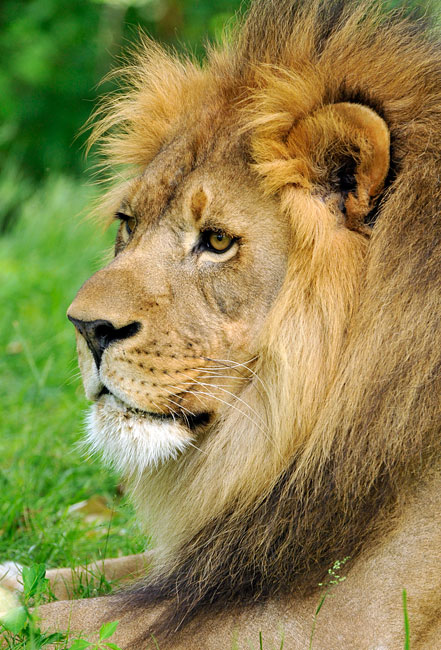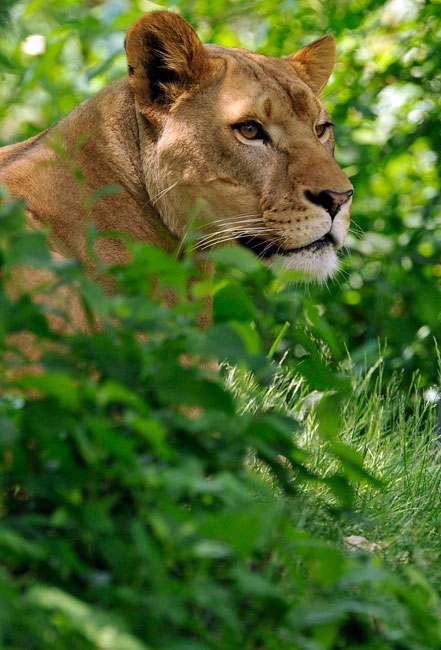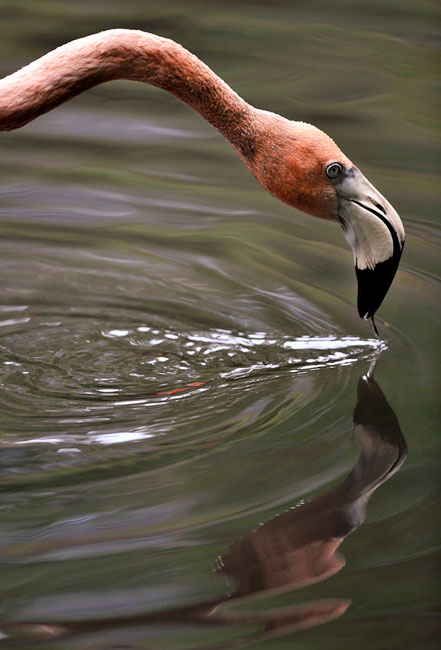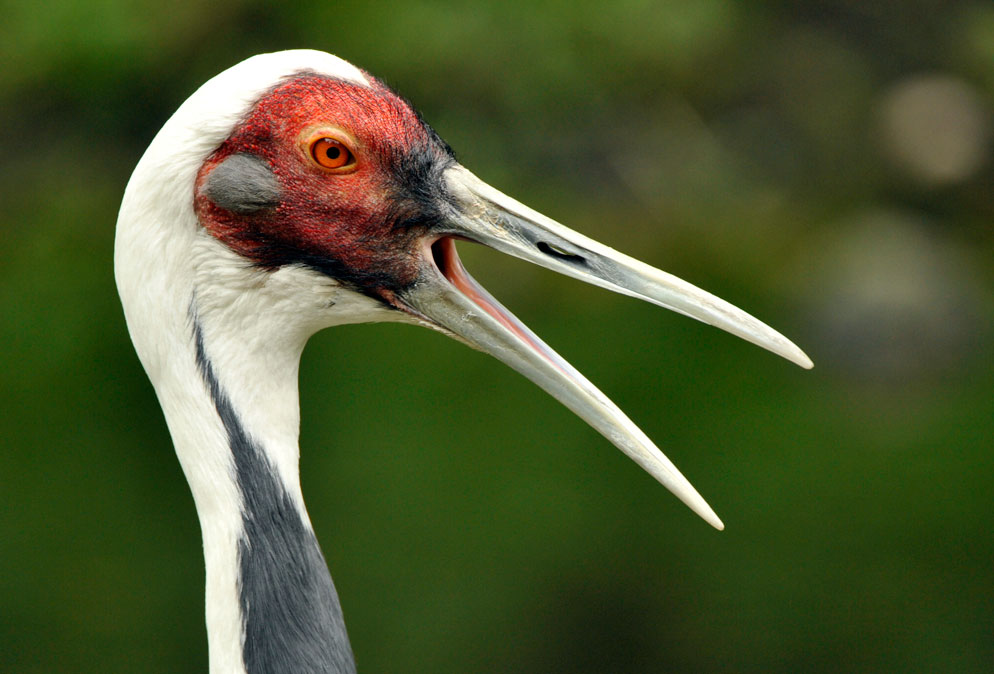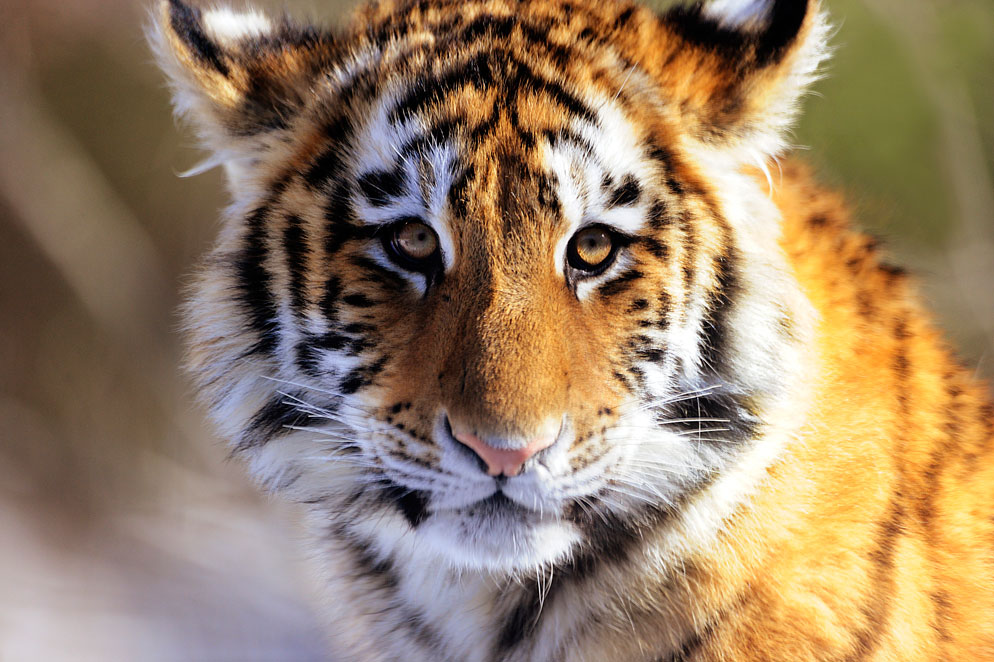Taking Better Pictures of Animals at the Zoo
If you like animals, there's no place to get closer to these beautiful and interesting creatures than at your local zoo. With a little patience and planning, you can make great animal pictures.
Learn what to avoid. Consider where the animals are. Most will be in cages, some behind glass enclosures and others outdoors behind a fence. The best photos look like the animal is in its natural, wild habitat. So you'll want to stay away from scenes that show bricks, concrete, wire or fences. If it's not possible to keep the enclosure out of the shots, try framing very tight.
The longer telephoto lens you use (200 or 300mm) and the closer you get, the less the background will be recognizable. Also, when you use a telephoto lens, with the aperture wide open, and focus tightly on the animal, the bars of the cage tend to defocus, and blend into the scene, allowing you to make photographs that seem like there is no barrier between you and the animal.
Some of the things you want to look for, when photographing animals are the same things you look for when photographing people. Pictures are almost always better if you can see the subject's eyes. So watch the animal as you frame it the way you want, and wait to take the picture until you can see at least one of its eyes. If it's looking right at you, all the better. That helps create engagement between the viewer of the photo and the subject.
Look out for bright backgrounds. If the area behind the animal is brighter than the animal, the photo may end up being a silhouette because the camera's meter will be reading that there's a lot of light in the scene. In such an instance you may have to meter manually if you're using a Nikon D-SLR. You could also try to move to another position, where the background is darker than your subject.
Also look for interaction among the animals. They can be playing or grooming each other. Those kinds of pictures give a feel for what the animal's life is like.
Try to avoid using flash. While it's sometimes necessary to be able to see your subject, it will also reduce some of the shadows that natural light gives. That in turn can make the picture look "flat" and less interesting. Make it a rule to use flash only if you absolutely have to, to get the picture. You may be surprised at how slow a shutter speed you can shoot at if your subject is still, you're using good technique and gently pressing the shutter.
If you're shooting through glass, remember to get very close to the glass and photograph straight into the glass window, to avoid reflections. Don't use flash; otherwise you are likely to get flare from the flash in your photo.
And as always, keep an eye on your camera's settings. Outdoors you often can leave the camera in full Automatic mode (if your model has that) and get good pictures. If it gets cloudy, or you're indoors, you may need to raise the ISO (up to 800 or higher) to get a faster shutter speed (try for 1/200 or above). And if you're indoors, and the light is predominantly artificial (instead of daylight through windows), try some of the different white balance settings, like fluorescent or incandescent, to see whether that helps the color.
Be patient and observant when photographing the animals at the zoo and you'll capture some great photographs.
Don't Forget the Humans!
You don't have to solely focus on just the animals when you bring your camera to the zoo (pun intended). Remember to capture your children's wide-eyed wonder at viewing the gentle giants and small creatures that call the zoo home. Whether it's their first visit to the zoo or a return trip, you're sure to capture delightful expressions on their faces.
Many zoos have areas for children to interact with small animals or to learn about their environment through exploration. These will also provide you with many photo taking opportunities.
Also, check out the schedule of events when you arrive. In addition to the various animal habitats, there are usually daily animal feedings and live shows that you can photograph as well. Try to incorporate the zookeeper into these photos.
And don't forget to try your hand at capturing video. Most COOLPIX cameras and specific Nikon D-SLRs can capture HD video. You can get some great video footage of the animals in their habitats.
Lastly, look around for other interesting photographs you can make. Many of the outdoor animal habitats would also make great landscape images. And since they're often designed around the locales that the animals originated from, you'll end up with unique photographs from your own local safari adventure.

